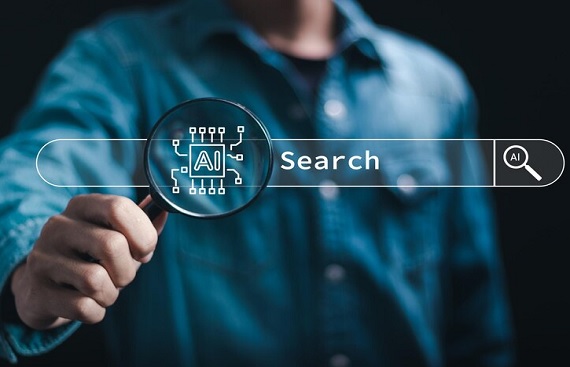How Does Search Engine Advertising (SEA) Boost Online Visibility?

Search engine advertising (SEA), also known as pay-per-click (PPC) advertising, is a digital marketing strategy where businesses place paid ads on search engine results pages (SERPs) to increase visibility and drive targeted traffic to their website or brand. SEA works by bidding on relevant keywords, so when users search for those terms, the ads may appear at the top of the SERP based on the bid amount and ad quality. Advertisers pay only when a user clicks on their ad, making it a cost-effective approach. The major search engines offering SEA include Google, Bing, and Yahoo, each with its own advertising platform Google Ads, Microsoft Advertising, and Yahoo Gemini to create and manage campaigns efficiently.
How Do Keywords Drive SEA Success?
The principle of Search engine advertising works on a simple principle. The initial step in promoting a business through Google, Bing, or Yahoo is to identify the keywords that relate to the business. It's important to understand the search terms people use to find similar websites and services. Once you have this list of keywords, you can begin crafting the text for your ad. After that, you must decide your budget for each click on your ad. The placement of your ad in search results can offer you an advantage over your competitors, though it is just one element of a successful SEA campaign.
With many factors to consider in the advertising process, an SEA specialist dedicates significant time to each stage of developing, executing, and maintaining online marketing campaigns. Early on, it's important to account for budgets and regional targeting. The landing pages your ad directs users to must be optimized. After the ad is launched, performance data can be reviewed and marketing strategies fine-tuned. Achieving the desired effect often requires advertisers to revise their ad copy multiple times to create an engaging message with seamlessly integrated keywords.
Similar to SEO, the initial step in SEA involves identifying relevant keywords that align with your business and industry. This research is crucial to ensure your ad addresses users' search queries effectively. Once you've chosen your keywords, you can draft a landing page for your ad, which will be the focus of your promotion. Next, determine how much you are willing to pay for each user click on your ad. One of the key advantages of SEA is the competitive edge it provides; by setting the right bid, you can maintain top positions in search results. Therefore, it's essential to carefully consider your budget and create an exceptional online marketing campaign that engages users who visit your website through search engine advertising. Additionally, SEA marketing accelerates customer growth and brand awareness, saving you valuable time in expanding your business.
How Do AI Tools Enhance Ad Personalization in SEA?
The integration of artificial intelligence (AI) into search engine advertising (SEA) has brought a transformative shift to digital marketing. As data-driven and digitized approaches gain prominence, traditional marketing methods are being replaced by advanced, automated techniques. Google Ads has been a key player in this transformation, driving innovation in the field and leading the way in incorporating AI into search engine advertising. AI in Google Ads has been carefully developed over the years, aiming to enhance the user experience for advertisers and improve ad delivery efficiency. A prime example of these efforts is the AI-powered 'Performance Max' campaign. This campaign uses machine learning to craft personalized ad strategies, drawing from various data sources and applying complex algorithms to create targeted campaigns that resonate with individual users, thus boosting the impact of ad campaigns.
In addition to Performance Max, Google has rolled out other AI-driven tools to improve the predictability and accuracy of ad placements. The Performance Planner leverages AI to predict the performance of SEA campaigns using historical data and trends, helping advertisers refine their strategies for better results. Precision Bidding, another significant AI innovation from Google Ads, employs machine learning and complex algorithms to identify optimal ad bids. By taking into account factors such as audience behavior, competitor pricing, and past ad performance, this tool enables advertisers to use their budgets efficiently while boosting campaign success.
Shubhabrata Mohanty, VP - Product Development & Site Head, CDK Global (India), says, "AI will provide a variety of marketing choices and digital marketers & promoters must embrace and accept the strength of the AI to enhance their plans and marketing techniques. Artificial Intelligence will trans-form how Digital Marketing is done today, with its ability to change and manage in real-time, both customers and digital marketers would definitely be on the winning side in this digital war".
Google Ads with AI
Google Bard is a recent AI advancement that is a highly advanced chatbot designed to comprehend and generate human-like text. Although it's currently in beta testing, Bard's potential influence on advertising is significant. It could enable real-time, lifelike interactions that may revolutionize user engagement and personalization in advertising. Amidst this evolving environment, Shopstory stands out as a useful tool for advertisers, automating processes to improve campaign effectiveness. By supplying optimal data for Google's AI, Shopstory aids in the efficient control and use of AI within Google Ads, helping advertisers fully leverage the potential of their campaigns.
Final Note
Search engine advertising is a valuable strategy for businesses aiming to increase their online visibility and attract targeted traffic to their website. By adopting best practices, tracking performance, and keeping up with industry trends, businesses can enhance the effectiveness of their SEA campaigns and meet their marketing objectives.
Read More News :
